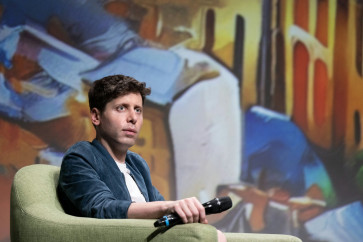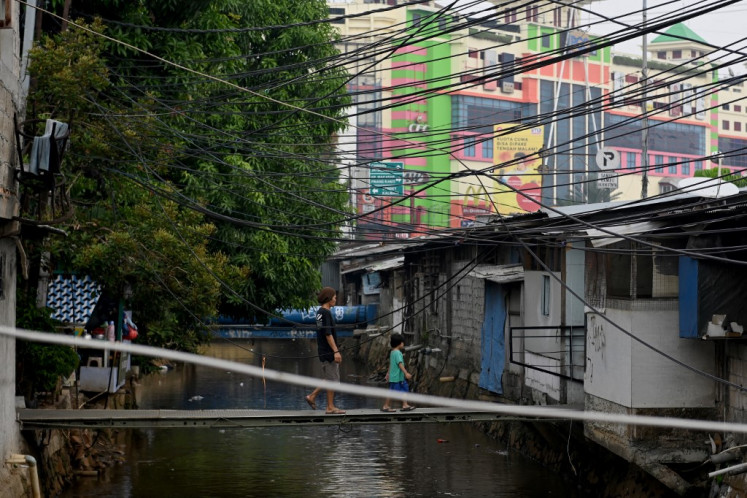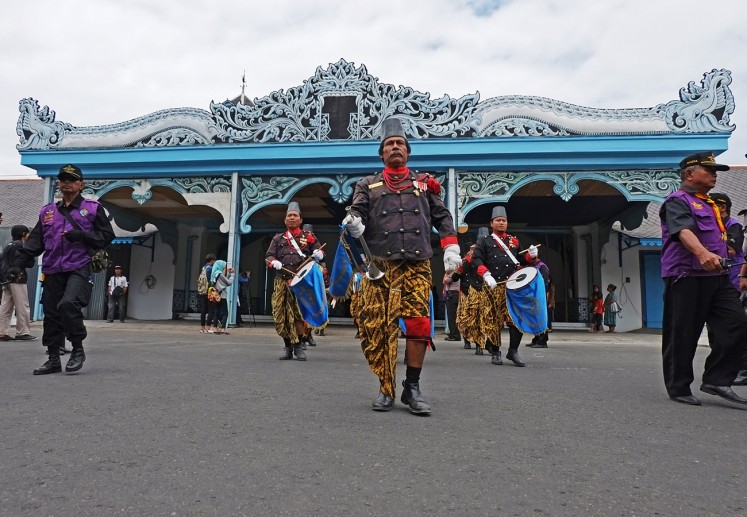Alpha Fabela Priyatmono: Reviving Kampung Batik Laweyan
Prior to 2004, Kampung Batik Laweyan, a long-standing center of batik products in Surakarta (Solo), Central Java, had halted nearly all of its batik production, leaving behind only its name
Change text size
Gift Premium Articles
to Anyone

P
rior to 2004, Kampung Batik Laweyan, a long-standing center of batik products in Surakarta (Solo), Central Java, had halted nearly all of its batik production, leaving behind only its name.
JP/Ganug Nugroho Adi
From the 1970s to the early 2000s, the batik business in Kampung Batik Laweyan was in a state of suspended animation due to the influx of printed batik from China. Dozens of batik home industries closed down, forcing batik craftsmen to abandon their jobs, and most of their employers’ old buildings fell into disrepair.
For over 30 years the batik tradition in Laweyan, handed down through generations, was in jeo-pardy. Young people in Laweyan tried their luck in other regions. Laweyan batik, popular since the 19th century, slid into obscurity from their heyday in the 1930s.
Finally in 2003, one of the eight remaining batik businessmen, Alpha Fabela Priyatmono, initiated the development of Laweyan into a batik tourist village. “With some of my peers in Laweyan, I wanted to revive batik-making based on a tourism concept. This neighborhood is unique, abounding with old structures. While buying batik, visitors can also look at heritage buildings,” said Alpha at his home in Sayangan Kulon in Laweyan.
In 2004, the Surakarta city administration responded to the idea and patented 215 batik motifs from Laweyan. Meanwhile, Alpha also started restructuring the batik village by forming the Kampung Batik Laweyan Development Forum (FPKBL) in order to empower Laweyan residents.
Through the forum Laweyan residents joined hands to develop batik and non-batik tourism, also promoting the area’s history, heritage and traditions. “We’re only carrying on and boosting whatever has survived in this area,” said the recipient of the government’s 2008 Upakarti award for pioneering batik industrial regeneration.
Alpha and the FPKBL searched for capital needed by producers to resume their operations, handled promotion, established cooperation with travel bureaus, undertook heritage preservation and managed waste processing. “We’re not only engaged in batik production but also responsible for the conservation of Laweyan,” said Alpha, a Laweyan resident since 1985.
He was born in Yogyakarta on Feb. 16, 1960, into a family with no batik background. His father, Yatmono Hadiyahmanto, was a civil servant and his mother, Soenarni, a small handicraft maker. But Alpha has loved batiks since he was a child.
“I got acquainted with batik designs through my mother’s batik sarongs. I began to like unique motifs as she used to wear different patterns of batik,” recalled the architecture graduate of Gajah Mada University in Yogyakarta.
His marriage with Juliani Prasetyaningrum, the daughter of a batik businessman in Laweyan, caused Alpha to delve deeper into the batik world. More than just striving to breathe new life into his father-in-law’s batik shop, Batik Mahkota, he also redesigned the development of Laweyan.
In 2003, he conducted research on redesigning Laweyan as a batik zone for his graduate school thesis at UGM’s School of Architecture. His work has now served as a reference point for the reorganization of Kampung Batik Laweyan.
According to Alpha, many Laweyan businessmen initially failed to notice the high value of their old homes. Some even renovated the buildings for the sheer purpose of making them collateral to secure bank loans. In fact, nearly all the structures in Laweyan are architecturally of Dutch origin.
“After the research, I was more convinced that Laweyan deserved the status of a heritage zone. In Laweyan, people can go shopping for batiks as well as see local exotic architecture and learn about its batik history,” said the engineering school lecturer of Muhammadiyah University of Surakarta.
With Alpha heading the FKPBL since 2004, the forum has succeeded in nurturing a sense of belonging among Laweyan residents. They have been trying to put things in order for Laweyan’s conservation.
“We’ve made some sort of a grand design, mapping the parts that can change and those to be preserved,” said Alpha, who in 2010 earned
the Dharmakusala award from the Surakarta city administration for entrepreneurship.
Alpha and several batik businessmen also managed a fund from the Trade Ministry for the conservation of 30 buildings in Laweyan as a way of stimulating the activity of
local people.
Those halting their batik-making have now resumed business. From only eight batik entrepreneurs in 2004, the number of batik producers in Kampung Batik Laweyan has reached around 90.
“We’re also reviving the events frequently held in Laweyan decades ago, such as discussions, art performances and batik workshops,” said Alpha, who once displayed Laweyan batik in Nanning, China.
With his wife, Alpha reopened his family’s batik business after years of inactivity, even with partly damaged production equipment.
“We started with two workers. After over five years, Batik Mahkota began to grow. Now we have 12 workers with a monthly capacity of 100 handmade batik pieces,” said the father of four.
As a member of the Surakarta mayor’s Cultural Heritage Expert Team, Alpha can now feel relieved to see Kampung Batik Laweyan making progress over the last six years.
The 24-hectare zone has become an integrated batik tourist village, offering up batik traditions, cultural heritage and shopping.









